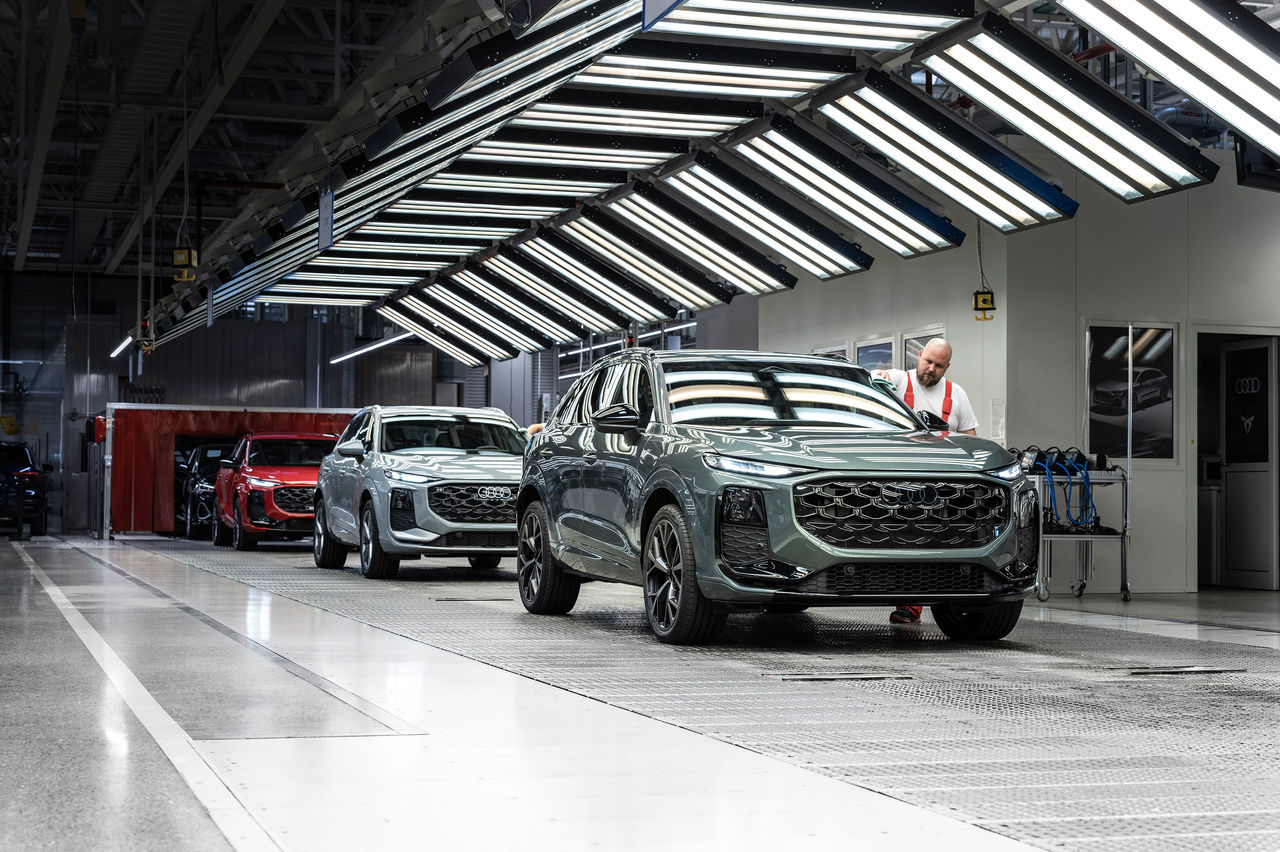Alongside the CUPRA Terramar and the first-generation Audi Q3 and Q3 Sportback, the successor to one of the most popular models of the four-ring company, the new Q3 and new Q3 Sportback, arrived in 2025, the reception of which was successfully prepared and managed by a team of already well-coordinated and experienced professionals. And whether the process, which has been months in the making and is still ongoing, was really a five-finger exercise is something our staff could tell you about, and are now doing so.
The Analysis Center/Pilothalle is responsible for optimising the quality of new vehicles produced at Audi Hungaria from pre-series assembly to the end of production, with some of its experienced colleagues currently providing support in countries around the world, including on other Group models.
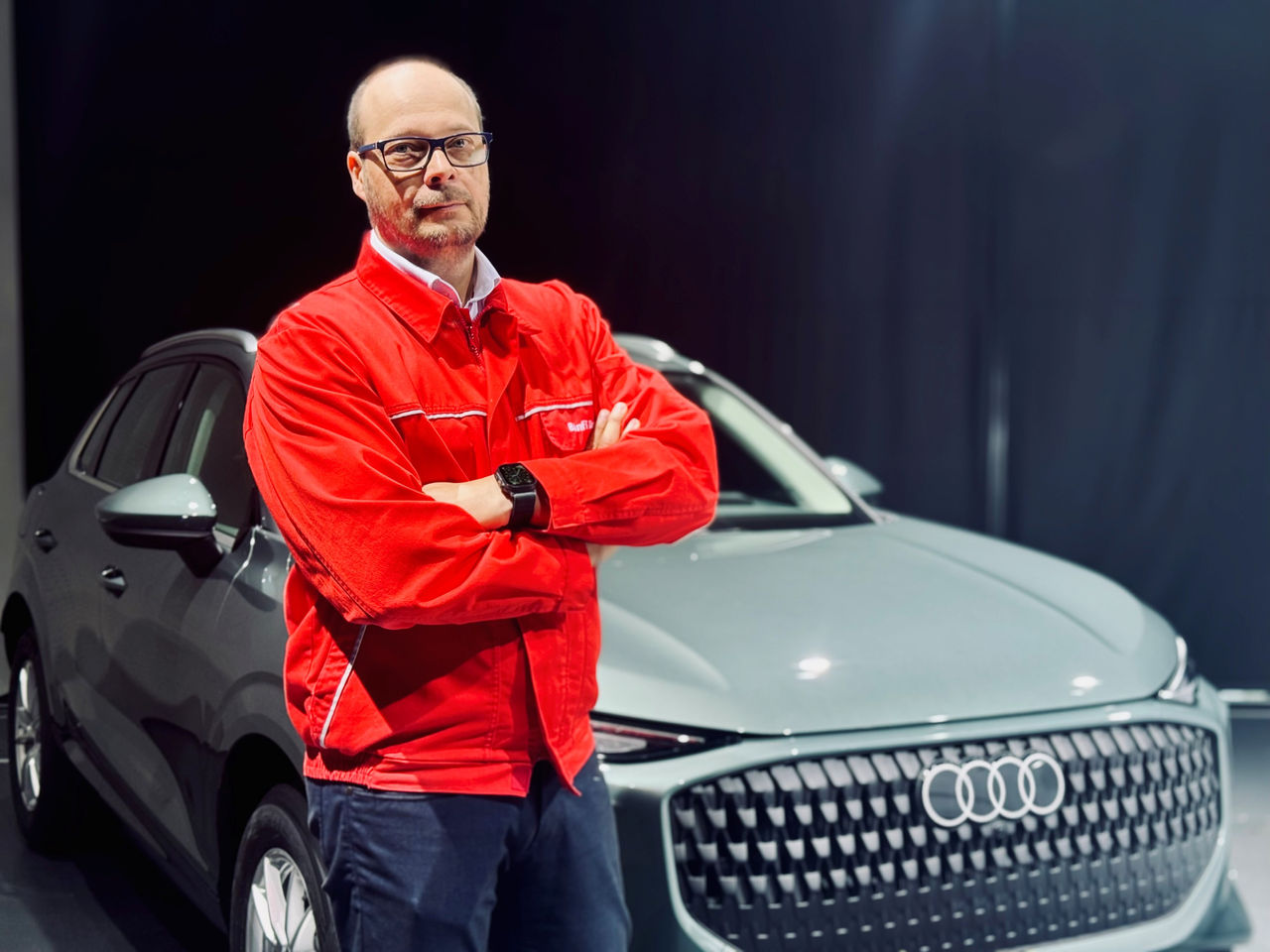
The time schedule and professional attitude of Tamás Bánfi, the head of this area, show how much perfect processes, or even fault detection, proper reaction and documentation are required for the model to receive the green light for series production from a mechanical and electronic point of view. In addition, the Q3 successor model was the first to try their merged structure, with pre-series and series production concentrated in one hand – and we can say that it has performed excellently, while the ramp-up of CUPRA has also taken up much of their capacity.
"The project structure that was established during the ramp-up of the previous model, the forums for discussions, personal contacts and the experience of my colleagues gained at that time contributed greatly to the success, but the past period was far from uneventful. The biggest challenge was the more complex internal electrical network and the delay in software development, and the increasing use of English in our German-Hungarian communication, especially with the development team. We literally had to find a common language, both professionally and in terms of communication. It is a testament to the knowledge and creativity of the analysis team that we also found a definitive solution to the initial opening noise of the boot door, the result of a collaborative effort across a wide range of functions (from body construction to assembly)."
As Tamás puts it, the beauty of their work is the car itself, as they have a tangible connection to the product, which in the case of the Q3 successor model, with its electronics and all-new infotainment system, is the next step in Audi's evolution.
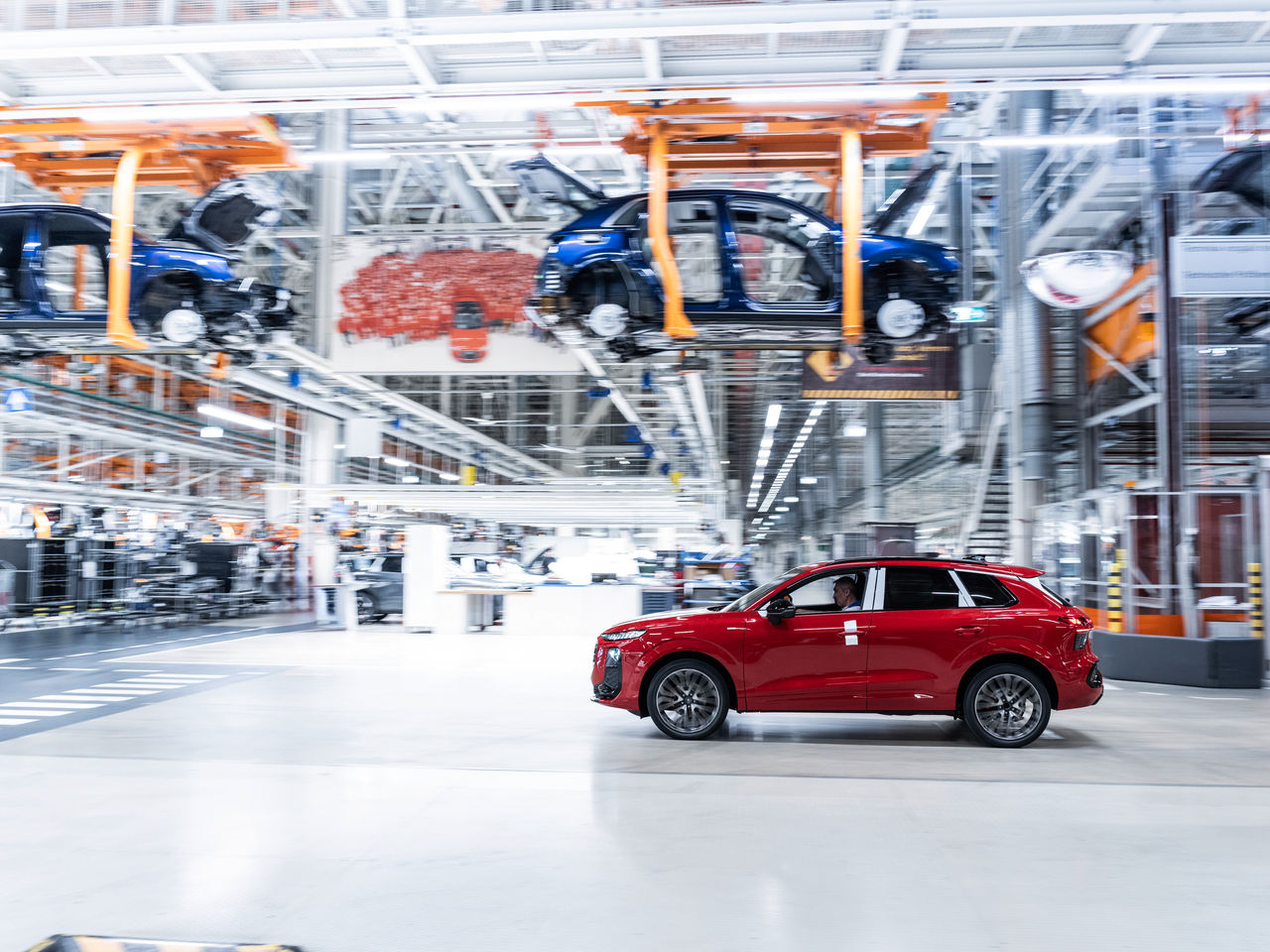
The vehicle workshop team has also successfully completed several model changes and introductions, so they have built on previous experience to quickly understand the tasks and respond effectively to the technical and logistical challenges that arise. However, the specificities of the new Q3 meant that this launch was new ground in many ways.
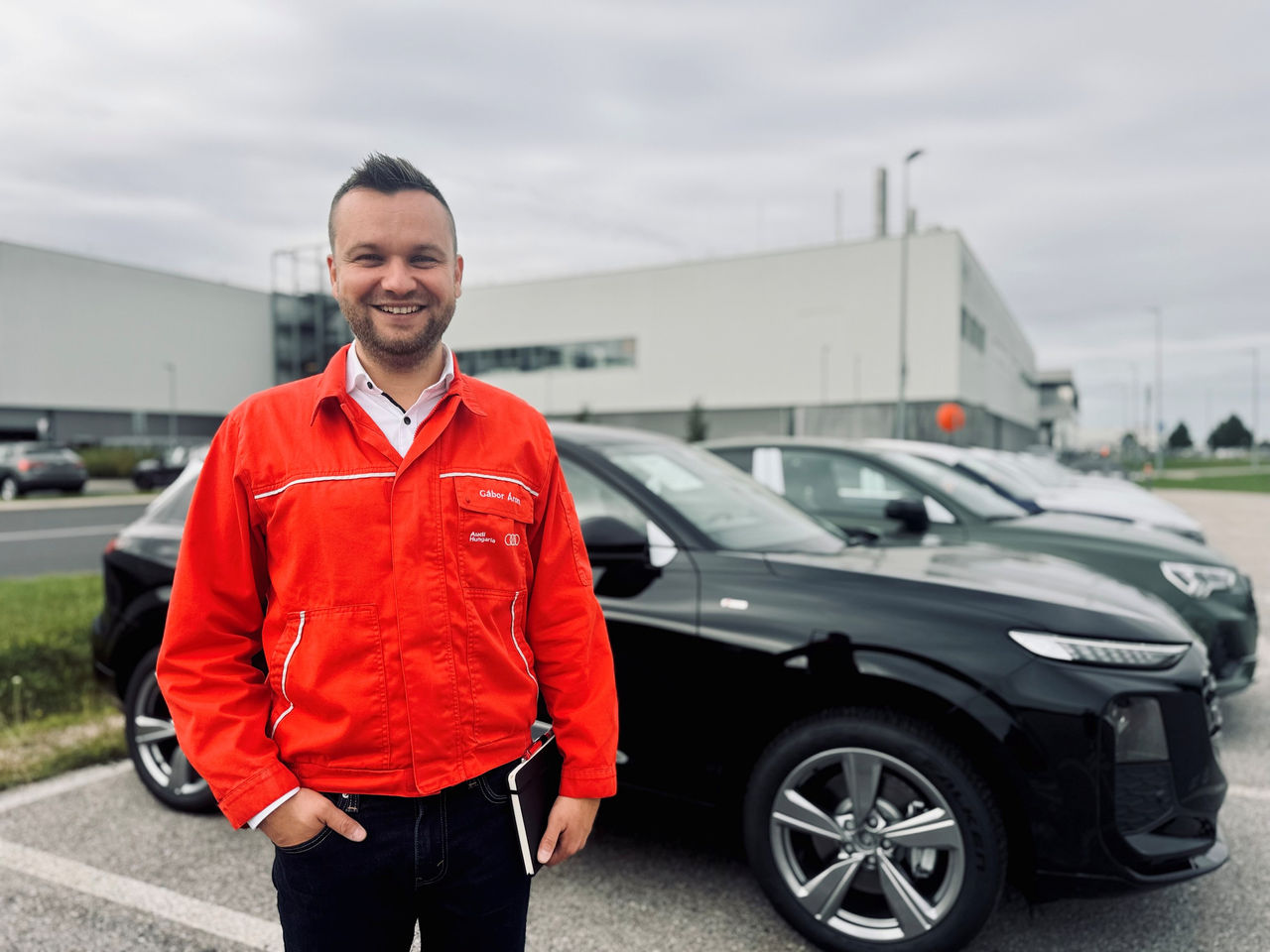
Áron Gábor coordinated the project on behalf of the assembly shop, where one of the biggest challenges was that the production line had to be extensively re-timed, i.e. the usual assembly sequence had to be adapted to the technical changes of the new car, as certain parts were installed on a completely different section of the assembly line.
"In line with our ‘don’t change a proven process’ philosophy, we have not changed the assembly timing of the first-generation Audi Q3 model due to the still high customer demand, so we have adapted the successor model to the proven production structure. We have developed a mixed timing, which we will maintain until the model is fully rolled out. We are already preparing because we will only have three days to reorganise the production line and let go of old routines, which requires serious planning and team coordination.
Our assembly shop staff have been extremely flexible during the transition period. In their training and ongoing transition, 13 of my multiplier colleagues have done, and are doing, the lion's share of the work, playing a key role in maintaining the highest level of professionalism. What I'm particularly proud of is that a trainee colleague working alongside me has been recruited to Ingolstadt as a trainee, using his valuable professional experience here."
As a member of the Győr delegation, Áron was also able to attend the world premiere of the new Q3 in Ingolstadt, which was a defining experience for him. He found it uplifting to experience the unveiling of the previously hidden, covered model, which they had been able to admire every day in the factory in Győr, but were not allowed to show even to their families due to strict confidentiality rules.
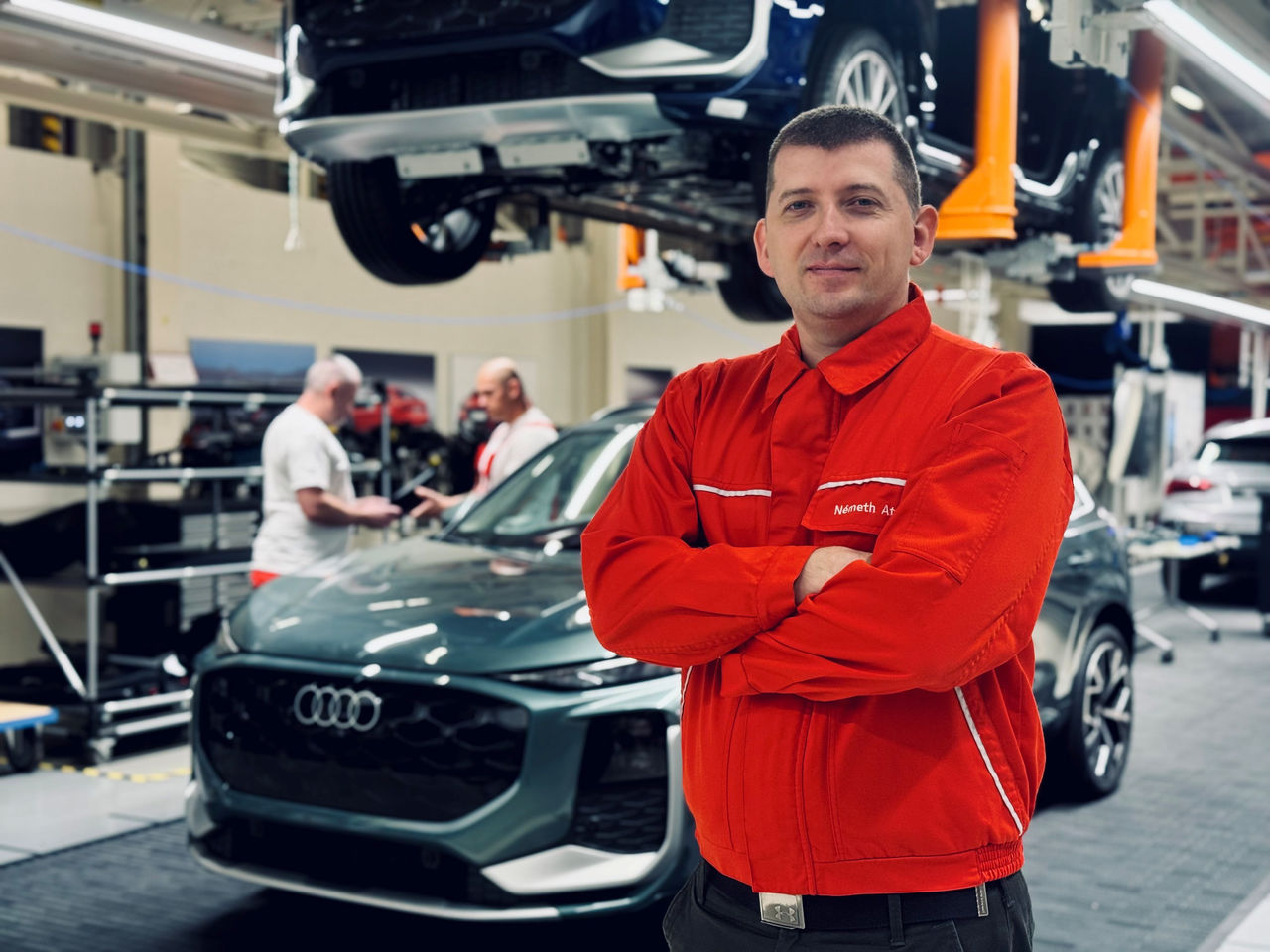
Since then, the new models have been built on the Audi Hungaria production line by Audi employees, whose high level of professional expertise requires the right support. The Profiraum team, where Attila Németh also works, is responsible for training new entrants, educating students in dual training and keeping track of changes. They also supported the production of the new Q3, helped to ensure that the line was running smoothly, and provided support for the series of workshops.
"Not only from production, but also from indirect areas such as controlling and quality assurance, 301 people attended the training I held. Our task is to keep our staff up to date and to continuously improve their skills, which requires constant updating of our training materials and equipment, ordering, preparing and assembling the right vehicles and parts. With the new Q3, it was a great pleasure to see the motivation of the staff, as they are interested in the product, they are enthusiastic, and although it is always easier to continue on the familiar path, they are open to changes and novelties as well. For learning more complex processes, we always provide space in the Profiraum. And there's plenty of it in the new model, with new connectors, control units, new bolting cases, clips, or even a particularly large number of new features from the second generation PHEV.
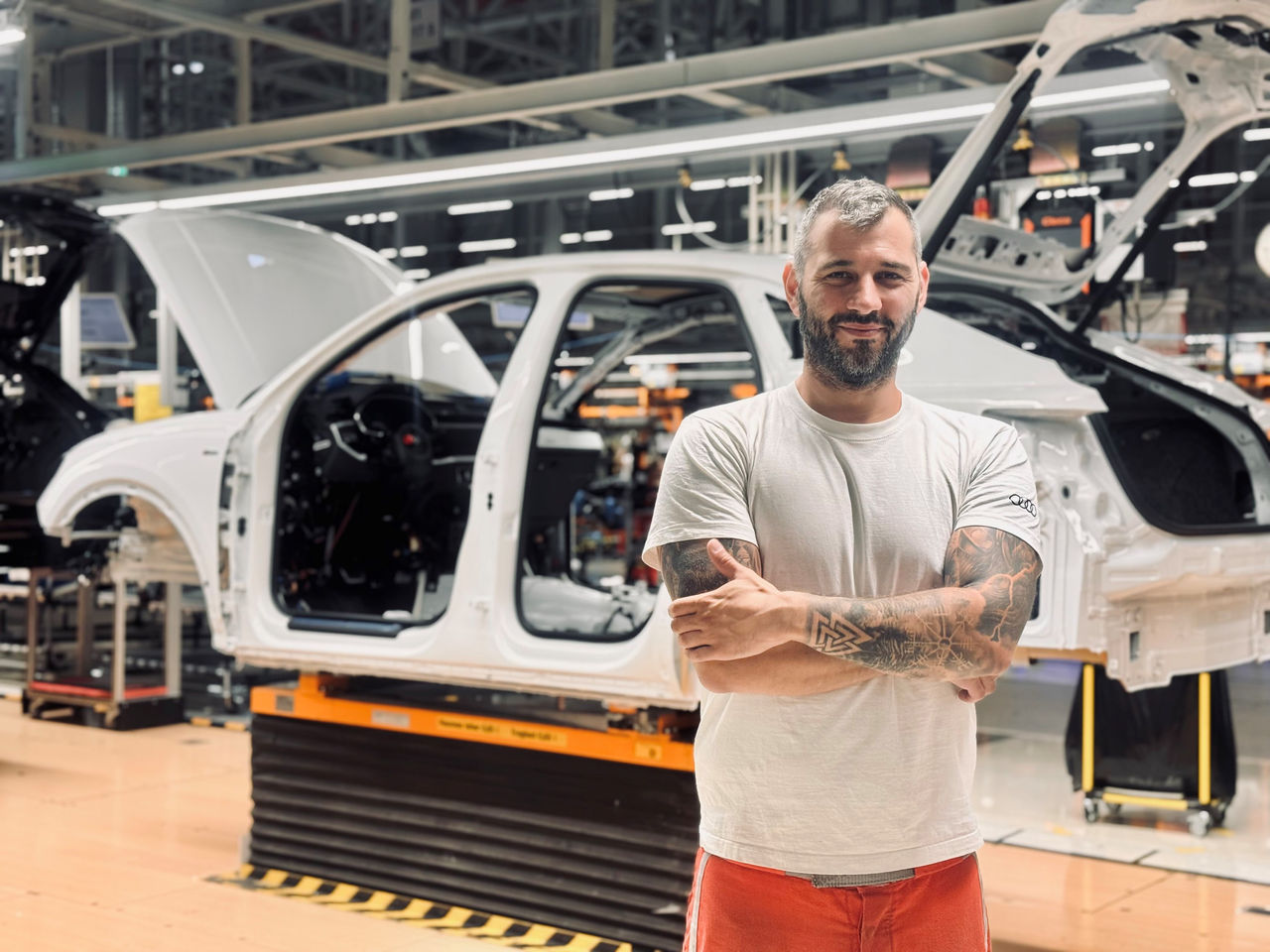
On the section of the assembly line where Dávid Szabó works, the dashboard is installed into the car. The construction process of the new model also brought new features for him, especially in the cable assembly and in connecting plugs that differ from the previous ones.
"I don't see the challenge in the workflow, but rather in the change itself, but I think we'll soon get used to the new things. We are delighted with the arrival of the new Q3, because we see that our workplace is on a solid footing in the long term, and I am sure that, like its predecessor, the successor will also be extremely popular. With its modernity and design, I think it has impressed all of us."
And indeed. Looking at the new models lined up under the neon lights of the assembly hall we are involuntarily overcome by a feeling that is not so easy to put into words... and then Attila Németh's words ring in our ears:
"I enjoy getting to know the technology of new cars up close and personal, quickly. Professionally, it is very rewarding to be able to pursue my hobby at work, because I am curious about the novelties of new models, the operation of the diagnostic tools needed to test them, and the assembly practices. I was very fond of this Q3 model, which is why I had reservations about its successor, but its technological innovations have convinced me by the time series production started. It's a great feeling to be part of this cog in the wheel mechanism, which ends up with such a high quality product."
